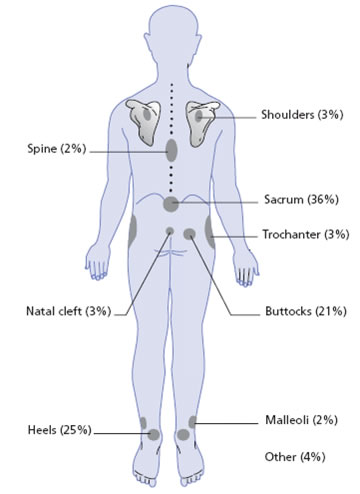
Pressure ulcers occur when local pressure on skin and subcutaneous tissues exceeds the capillary opening pressure for long enough to cause ischaemia. In addition, friction may cause blistering and tears in the skin. Pressure ulcers usually occur over weight-bearing bony prominences (see drawing below). Ulcers occur in patients who are immobile and unable to redistribute their own weight when lying or sitting.
See left for the anatomical distribution of established pressure sores, based on data from a cross-sectional UK study of pressure sores in patients being nursed on the Pegasus Airwave System.
Reference: Warlow’s Stroke: Practical Management, 4th Edition (2019) Graeme J. Hankey (Editor), Malcolm Macleod (Editor), Philip B. Gorelick (Editor), Christopher Chen (Editor), Fan Z. Caprio (Editor), Heinrich Mattle (Editor)
Page last reviewed: 21 Apr 2021


